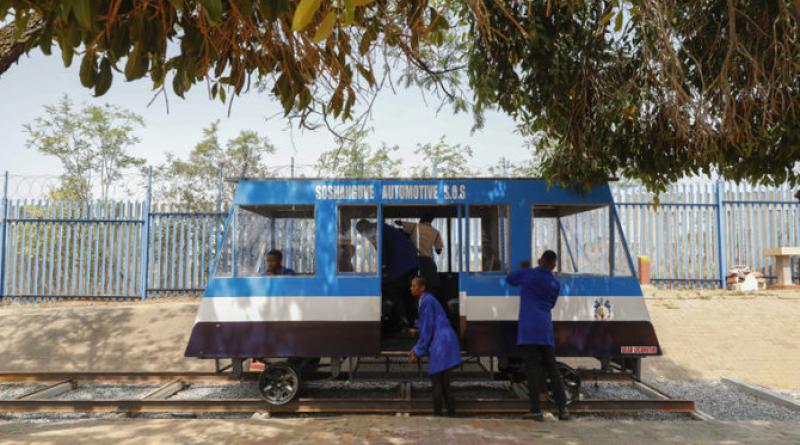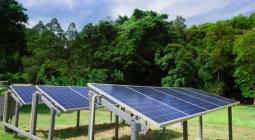North Africa’s untapped clean energy potential

Last year, Europe’s “sudden” pivot to North Africa to shore up its energy security and shift its reliance away from Russia have accelerated investments in the sub-region’s oil and gas sector and also re-energized partnerships traditionally dominated by security, migration and lop-sided bilateral trade.
In this era of convergent shocks both at home and abroad, however, centering North Africa’s energy development around Europe’s short-to-medium term energy needs will only exacerbate existing vulnerabilities, while slowing the transition toward clean energy sources. Additionally, this part of the world is already deeply fragmented, with very limited intra-regional trade, which means the continued focus on expanding the sub-region’s oil and gas exporting capacity will only widen existing gaps within and among countries that are yet to fully integrate.
Instead, Europe — a chief importer of North Africa’s hydrocarbons — must strive to accelerate the sub-region’s energy development as well as commit to harnessing its abundant clean energy potential in solar, wind and green hydrogen. Investing heavily in existing capacities, and building the necessary infrastructure, will drive domestic development that will lower energy costs and lead to clean energy (and its derivatives) becoming a major export commodity to buyers in Europe, Sub-Saharan Africa and elsewhere on the Eurasian continent seeking uninterrupted low-carbon energy imports in a post-oil world.
However, getting to that eventuality will be easier said than done.
Currently, more than 90 percent of North Africa’s energy supplies come from fossil fuels and other non-renewables, while renewables account for only about 5 percent. Four of the six North African countries burn natural gas to generate power, while Morocco and Mauritania rely on coal and oil, respectively. Put simply, with such non-diversified, fossil-fuel-dependent energy supply structures, countries in the sub-region are highly vulnerable to external shocks, and consistently lack sufficient capacity to absorb them.
The economies of net importers of fossil fuels such as Mauritania, Morocco and Tunisia are frequently exposed to sharp price increases, in addition to the burden of fossil fuel imports on their foreign currency reserves. Net exporters, on the other hand, are not just vulnerable to sustained price dips. Their tendency to heavily subsidize fossil fuel industries to make it seemingly “cheap” to, for instance, generate power using domestically produced supplies, shrinks fiscal space for investing in critical sectors such as health care and education.
Renewable energy continues to occupy a marginal role in North Africa, though its capacity has more or less doubled in the past five years. It is a puzzling reality given the fact that North Africa is one of the few sub-regions in the world with the highest clean energy potential. With generous support and targeted investments, North Africa could become the world’s foremost producer of clean energy, capitalizing on vast swaths of uninhabited land, solar radiation intensity, offshore wind capacity, existing pipeline networks, and transmission capacities.
In terms of solar radiation, for instance, the sheer size of the Sahara and the amount of sunshine it receives every year translates to a huge solar energy potential. If it were possible to convert all the solar radiation that hits the Sahara into energy, it would produce enough electricity to power not just North Africa itself and Europe, but the entire world many times over. A number of promising projects are seeking to tap into this potential, with one megaproject planning to install as many as 12 million solar panels over 500 wind turbines in Morocco to provide up to 8 percent of the UK’s electricity.
Such clean energy megaprojects scattered across North Africa and linked to Europe’s electricity grids are no longer just a pipe dream. Morocco is already “exporting the Sun” to Europe via Spain, and Egypt is examining proposals to do the same via Greece. Algeria has the largest wind energy potential, capable of producing more than 7,000 gigawatts if fully harnessed, while Mauritania’s combined wind and solar energy potential is estimated to be nearly four times what the country currently produces a year.
Beyond sprawling solar farms in the desert or giant wind turbines offshore, North Africa is also poised to become a major green hydrogen exporter. By harnessing “cheap” renewables, the sub-region can transition toward less capital and emissions-intensive production of green ammonia and/or green hydrogen, either for export, local industry or agriculture.
However, this is only assuming North African countries employ the right policy mix, overcome political paralysis and are granted generous funding to decarbonize and successfully diversify their economies — a Herculean task among the daunting challenges already plaguing the sub-region today. After all, tapping into North Africa’s vast clean energy potential will not be easy nor cheap. For others, the prospect of covering uninhabited parts of the Sahara with solar panels or littering Mediterranean coastlines with giant wind turbines does not sound desirable or wise.
Nonetheless, decarbonization and diversification in favor of renewables will enable North Africa to lower energy costs, meet emissions targets and expand export capacities for energy importers still reliant on fossil fuels prior to a globe-spanning shift toward cleaner energy sources. For countries in the region that import fossil fuels, diversification of economies and their energy mixes will lower risks of disruptions, while the exports of excess generated capacity can substantially boost export revenues. Falling energy costs also make it possible to rapidly expand solar and wind capacities, allowing for large-scale green hydrogen production, which can then become a major driver of North Africa’s sustainable development.
Looking ahead, Europe’s targeted investments in the sub-region’s clean energy sector have mutual benefits on both sides of the Mediterranean. For instance, harnessing North Africa’s potential for green hydrogen will not only reduce the countries’ dependencies on non-renewables, it will lower greenhouse gas emissions by up to 75 percent in just over a decade.
In addition, it will allow Europe and North Africa to chart pragmatic pathways toward much-needed development that would solve the sub-region’s intractable issues, ranging from youth unemployment to migratory surges, pervasive inequality and unsustainable debt burdens — to list a few. In turn, Europe will have much better energy-import options, especially given green hydrogen’s varied and extensive end-use cases that will contribute to the bloc’s growth (in an inevitable post-oil world) without undermining its commitments to substantially reduce emissions.
• Hafed Al-Ghwell is a senior fellow and executive director of the Ibn Khaldun Strategic Initiative at the Foreign Policy Institute of the Johns Hopkins University School of Advanced International Studies in Washington, DC, and the former adviser to the dean of the board of executive directors of the World Bank Group. Twitter: @HafedAlGhwell
cover photo:Students of Soshanguve technical high school clean a solar-powered train built by them, in Pretoria. (AFP)




